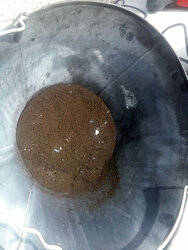Since the weather is very nice, I just tried to clean my 6 inch Selkirk Supervent double-wall stainless chimney with a Rutland 6 inch poly brush. With much more effort than I thought there should have been to simply push the cleaning brush halfway down the first section of pipe, I decided I didn't want it to get stuck, so I tried to extract the brush. That's when I realized this brush seems way too tight. It took a *lot of effort to simply reverse the brush to extract it.
I've read reviews where people have snipped a little off of the ends of each bristle but this still doesn't seem right. As is, though, there is a very real risk of getting the brush stuck in the chimney as tight as it is. Should I try a different brush or method?
I've read reviews where people have snipped a little off of the ends of each bristle but this still doesn't seem right. As is, though, there is a very real risk of getting the brush stuck in the chimney as tight as it is. Should I try a different brush or method?



